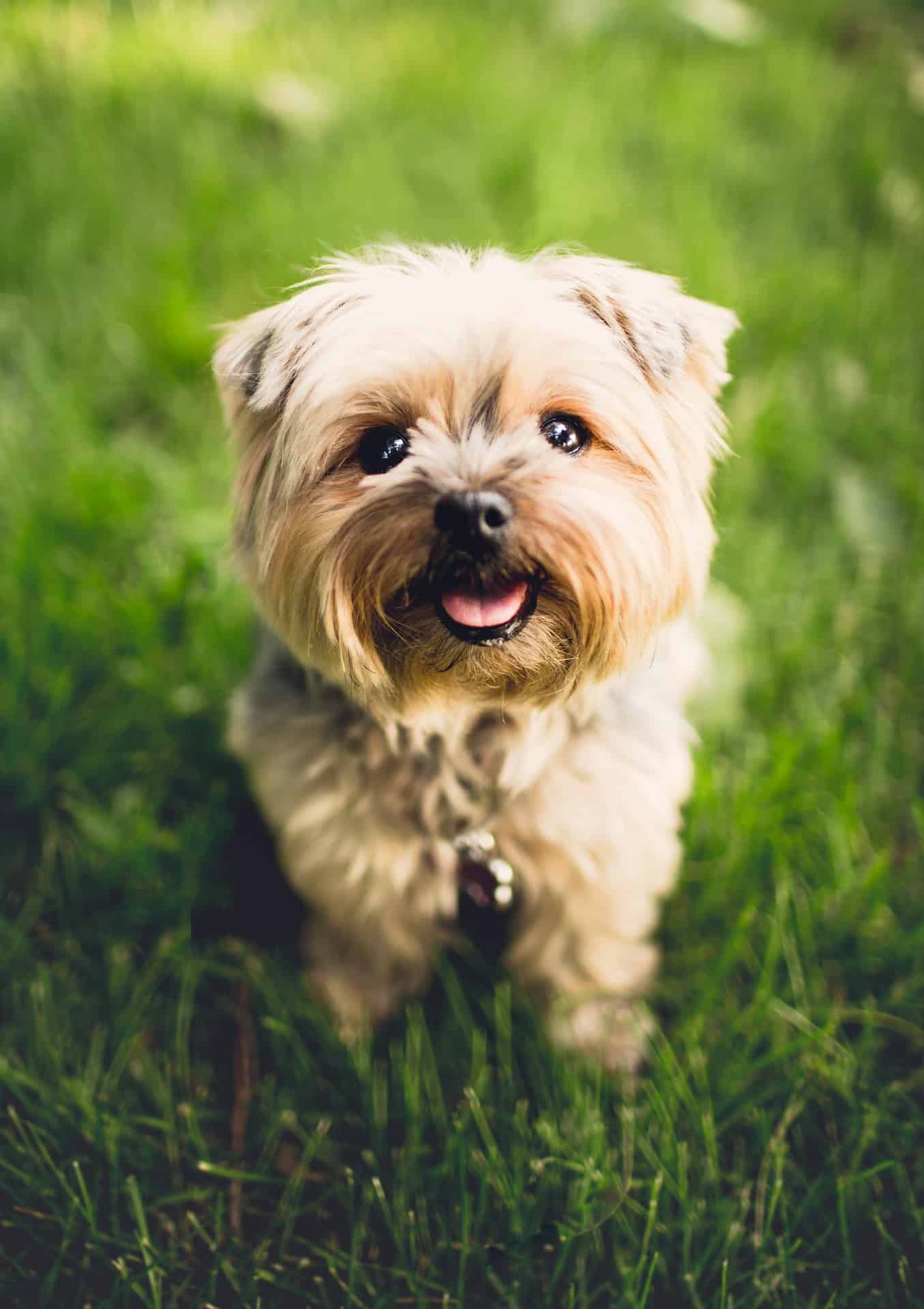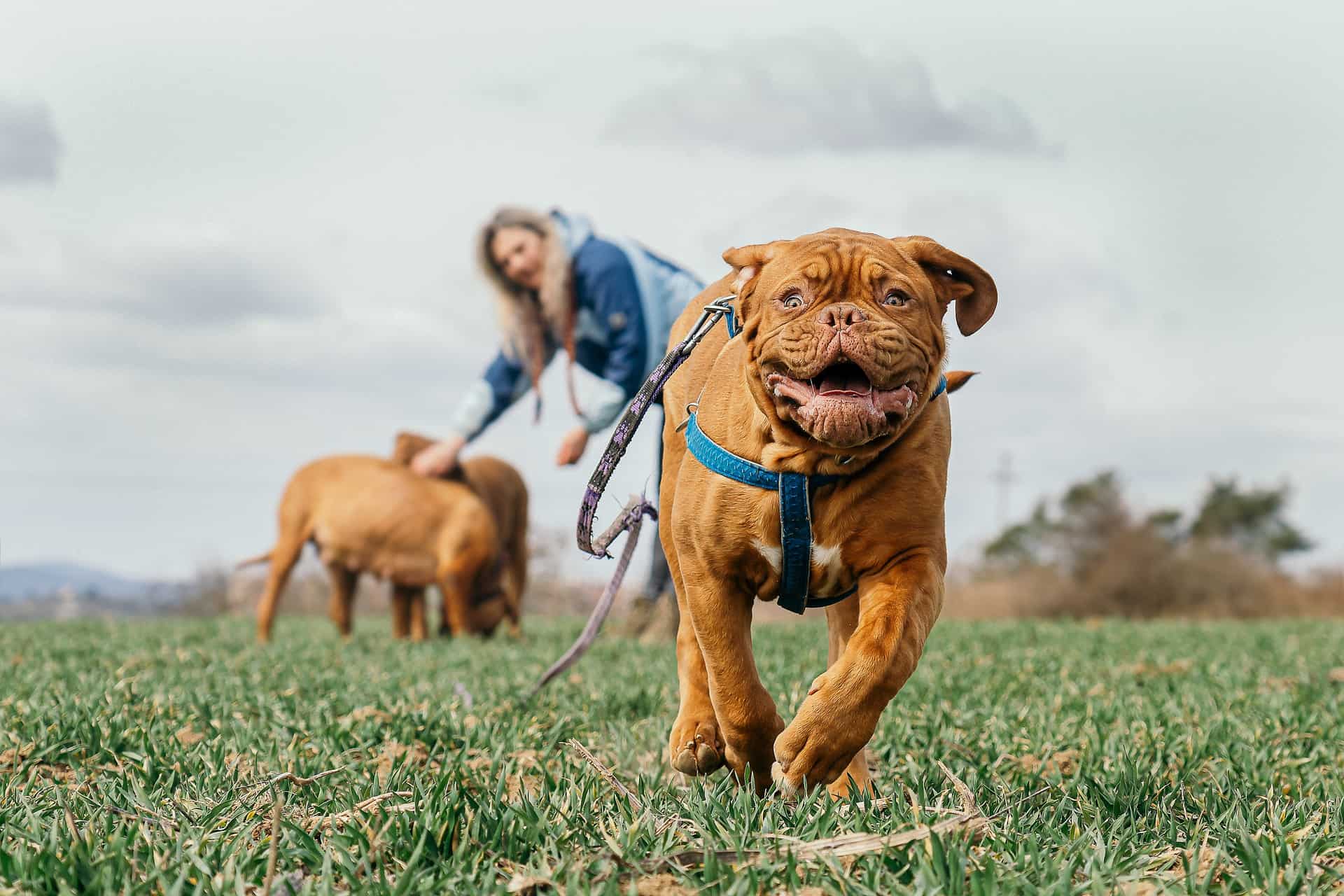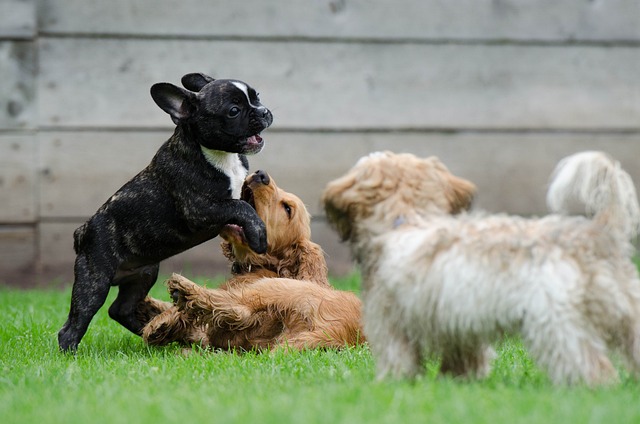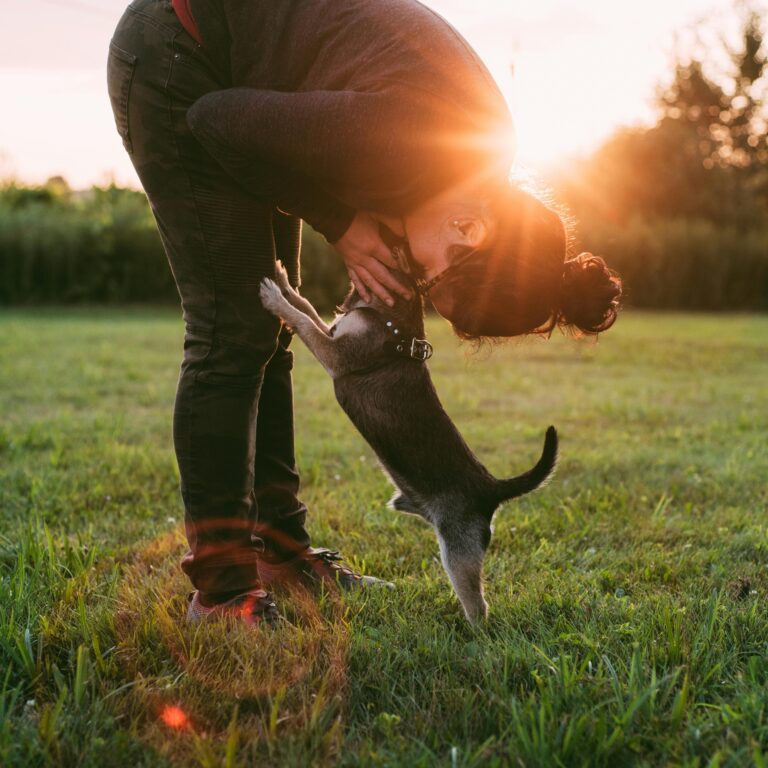
We all love the idea of being able to communicate with our dogs, and by communicate, I mean talking to them, and they understand. And though humans have figured out a way to communicate with dogs, there are still some restrictions. We may get our canine to understand some words, but when it comes to Phrases and sentences like ” I love you,” can our dog understand?
Our dogs can not naturally understand when we say ” I love you ” but could be made to understand what it means. Yes, we could teach our dogs to understand and relate the statement ” I love you ” to something positive. How? by tapping into our dog’s second most powerful sense, their memory. You may wonder how you could achieve this and get the desired reaction from your dog. In this post, we will find some helpful tips that would help you get your dog to understand the meaning of the statement I love you and other statements you may make.
COMMUNICATION WITH YOUR DOG STARTS WITH THE MIND.
Communicating with your dog successfully and getting it to understand the meaning behind what you say starts first from the mind.
It would help if you were balanced mentally and knew the exact information you would like your dog to understand before attempting to communicate. This may not be easy at first, but the more you practice composure, the better you will get.
Always remember that no matter how smart your canine might seem, he does not understand your speech.
It can only understand words that have been carefully aligned with action. If you desire your dog to listen and understand, you must come down to its level.
Doing this in itself is not easy and would require a lot of research. You could also consider hiring a professional to do the work.
No matter what steps you take to bridge that communication gap with your dog, it would be fun and improve your relationship with your dog. If you want your dog to react positively when it hears the words, I love you; you must consider many factors. One of those factors is time. What role does time play? Let’s find out.
WHEN SHOULD YOU SAY I LOVE YOU TO YOUR DOG?
Timing is everything when communicating with your dog. Your dog would do anything in its power to please you. This means trying its very best to understand your routine and adjust accordingly. Dogs also try to recognize and understand certain words you say by linking them to the actions you make.
For example, if you say ” get out ” to your dog while running towards it like you’re going to hit it, your dog would instinctively dash from the scene. If you repeat this action every time you tell your dog to get out, your dog will instinctively get out once it hears the word.
And even if you didn’t use the words get out but did the exact body movements your dog has associated with getting out, your dog would immediately leave the scene.
But what’s the point of this whole explanation? It’s to help you understand that you would need a plan to help your dog understand and associate the words I love you to something positive. This means making sure you pick the right moments, scenarios, and body expressions that would help your dog.
If you do not follow this step, you will run into the problem of your dog thinking something different from what you want it to understand. But how do you show your dog with your words and body language that you love him? And when would be the right time to do this? Let’s find out.
HOW DO YOU SHOW YOUR DOG YOU LOVE HIM?
As we’ve been saying since the beginning of this post, being in the right mood while choosing the right time is pivotal if you lay the right foundation for communication between you and your dog. If you want your dog to understand and react positively to your expression of love, you need to say the words I LOVE YOU, only when you are genuinely happy and mean it.
When you do this, your dog is more likely to sense the meaning of those words and act accordingly. So if it’s your first time and you want your dog to understand the meaning of this statement and react positively, say it only when you mean it.
Also, remember that since your dog can’t know the meaning of the sentences you make, word for word, it would only react based on your actions and the emotional sense it reads. So be sure only to give positive signs. And there is no specific time to do that to answer the question of when you should tell your dog I love you. Just be spontaneous and ensure you say this when you are happy and mean it.
Another thing that could harm you and your dog’s communication is a correction. This is where many dog owners hurt their communication with their dogs. So how can you be among the one percent that corrects their dogs the right way? Let’s find out.
HOW TO CORRECT YOUR DOG IN A LOVING WAY.
Once you have been able to break that communication bridge with your dog, it is important to keep that channel constantly open. One thing that has been seen to harm that bridge is a correction. We all have ideas of how the perfect dog for us should behave. But sometimes, this does not always happen.
And so, when our dog does or behaves in a way that may seem inappropriate, we tend to get upset and quickly move to correct our dog’s. When we correct our dogs without knowing how to, we will end up damaging that bridge of communication already established, or we might end up causing another behavioral issue we don’t like. So what’s the silver lining? How do you fix bad behavior?
HOW TO CORRECT YOUR DOG’S BAD BEHAVIOR IN THE HOUSE

First, if it isn’t broken, don’t try to fix it. But what exactly does that mean? Sometimes, a behavior we do not like may not need correcting but prevention.
For example, if you don’t like your dog eating your food, going into a certain room, or standing over you when you eat, instead of looking for a way to correct these behaviors, why not try preventing it? For example, if you do not want your dog hovering over you when you eat, why not try keeping your dog in its crate before you eat? And if you have certain objects you do not want your dog to interact with, why not try keeping those objects out of sight and reach your dog?
HOW TO CORRECT YOUR DOG’S BAD BEHAVIOR OUTDOOR

Some might argue that this correction is not as effective on dogs with actual behavioral issues. And they might be right. For example, what would be the best way to correct a very active dog that loves to pull on the leash? Well, if your dog is tagging on the leash a lot, it’s because it’s excited and probably not taking frequent walks.
The best way to resolve this would be to exercise your dogs regularly and play with them. Exercise and play with your dog even more before taking it out on a walk. Doing this regularly should eventually correct that behavior. But what if your dog is anxious and barks and growls at everything that moves? Well, for this issue, we have seen that your dog is most times anxious because you are anxious. As you read earlier, your dogs can sense how you feel and can be moved to act accordingly.
So, before you blame your dog, make sure to dig deeper. Try to find out when this behavior started. Did you have a major role to play in the birth of the behavior? Sometimes you need to work on your self-confidence. Having a balance emmotionaly, may be enough to get your dog to quite the behavior. If you are unsure what to do when correcting your dog, getting an expert on the job won’t hurt.
LOVING YOUR DOG IMPROVES COMMUNICATION,
So, how do you help your dog understand or associate the right meaning to the statement ” I love you?” Well, by showing your dog affection and care. Always make sure you say it when you mean it. If you do, your dog will sense the love and feel safe in your hands.



